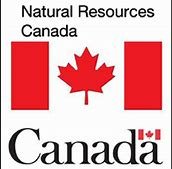NATURAL RESOURCES CANADA: FIREARMS POLICIES, PROCEDURES AND STATISTICS – Initial Analysis of 142-Page Response to my July 23, 2018 Access to Information Act request By Dennis R. Young – February 10, 2019
SEE PDF PAGES 137-142: NRCAN RESPONSE TO MY ORIGINAL EIGHT QUESTIONS
SEE PAGES 24-39: ANNUAL DEPARTMENTAL VERIFICATION ON COMPLIANCE AND OVERSIGHT ON FIREARMS – APRIL 2017
SEE PDF PAGE 35: DEPARTMENTAL FIREARMS, TYPE, MAKE AND MODEL: 47 RIFLES, 3 HANDGUNS, 126 SHOTGUNS
SEE PDF PAGES 88-90: MEMORANDUM TO ASSISTANT DEPUTY MINISTER – APRIL 24, 2018 – EXCERPT: “However, in specific regions of British Columbia and the Yukon, field conditions (i.e. mountainous landscapes, dense bush, and steep terrain), which generally require the use of both hands to safely traverse, make restricted firearms, specifically the .44 magnum side arm, the most appropriate solution for self-defence against wildlife.”

Interesting that NRCAN believes that “field conditions (i.e. mountainous landscapes, dense bush, and steep terrain), which generally require the use of both hands to safely traverse, make restricted firearms, specifically the .44 magnum side arm, the most appropriate solution for self-defense against wildlife” for their personnel. I would agree so why is this option to carry a sidearm not available to any one enjoying the outdoors where they wish to protect themselves. Carrying a long gun while hiking or fishing is not always a viable defense option.